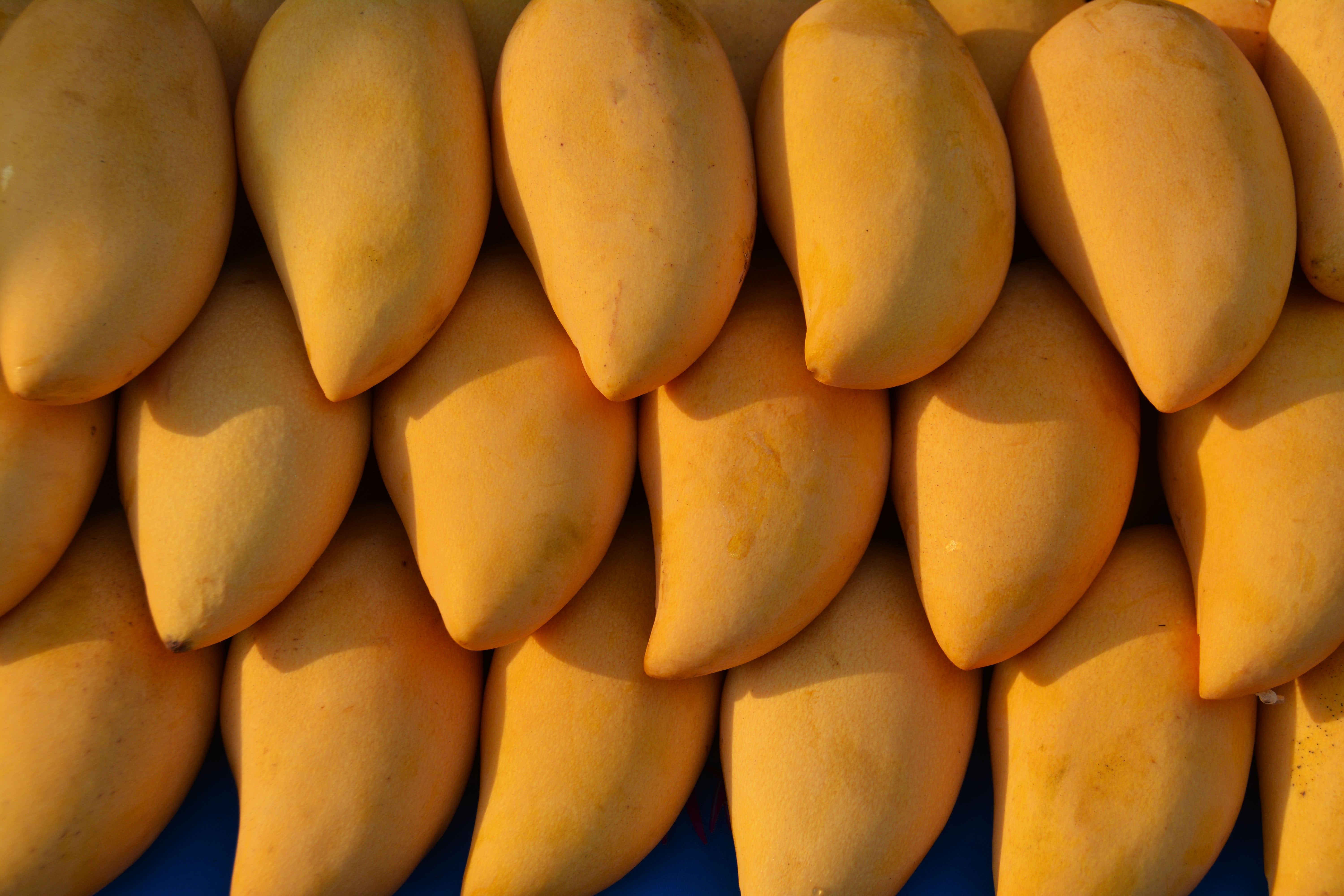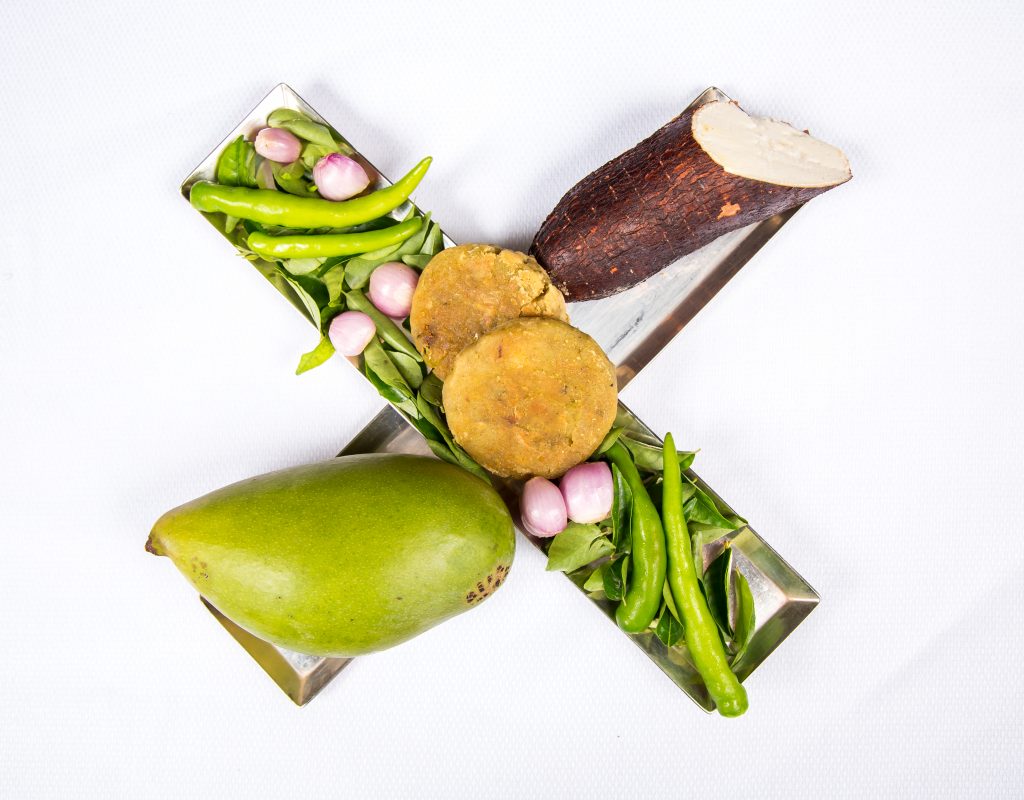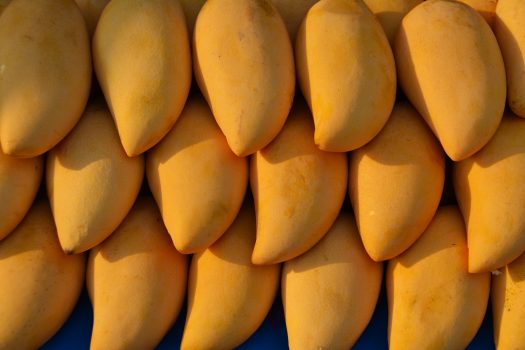Devashi Mody pays tribute to the golden yellow fruit that seduces everyone who crosses its path

The mango is the king of fruits. It is also the most dangerous of fruits, I realise, when one shatters millimetres from my head. Maya and Leela, housekeeping staff at my hotel Grey Suit, are aggressing the mango tree that covers the hotel, its branches laden with massive mangoes hanging outside the windows in irresistible enchantment. The girls have been shaking mangoes with an improvised stick noosed in a plastic bag when a sought mango misses, barely missing my head. No other fruit motivates such mindlessness (well, the apple, Eve would say…) Nothing perhaps unites India like the mango season in May, when madness spreads across the country like wild fire setting streets ablaze with stretches of golden mangoes on display.
Mangoes are exquisite. And, they have been around for a while in India! You can spot beautiful damsels at the stupendous Konark Sun Temple in Odisha, embowered in a mango tree whose fruits glitter through the lush leaves like a billion miniature suns.
My first experience of the mango season in India was when, as a child, I visited Mumbai for my cousin’s wedding felicitously in May. I fell in love with the alphonso that is golden like bullion, rich like saffron, redolent like nothing else and small like dynamite but explosive in ecstasy-inducing flavours. This is the world’s most famous mango. Why would you spend thrice as much for a mango third the size of enormities like Rajapuri? For its maddeningly ineffable flavour that is only describable by the squeals of delight it extorts. Indelibly etched in memory are slices of glowing alphonso like sun-drenched boats lazing languidly on white plates at my grandmother’s house. And, during wedding meals we would have thalis with mango shrikhand, mango kheer, mango kulfi, and so on. Yet, what I loved most was aam ras, luxuriant mango juice to be had with hot, hot puris.
My grandmother’s maharaj (cook) watching me demolish bowl after bowl of aam ras conjured the mango season in Rajasthan, from where he hailed, and offered to whisk me away to his mango-groved village. Lest I elope with the cook my grandmother took to freezing aam ras for my annual visits from the United Kingdom every December. Alas, defrosted aam ras does not retain the thrill of fresh, fragrant extracts. Moreover, there is only so much one could store and rationing diminishes the pleasure, especially as my mother would agonise me with childhood recollections of summering in Gujarat, where her uncles had ample barns carpeted in mangoes that she unabashedly gorged on for breakfast, lunch and dinner.
The mango season in all its abundant childish glory still exists in South India, too. I certainly relished it over my first Chennai summer in 2011. Sprays of golden mangoes enlivened the streets. Heaps and heaps of mangoes heaved aromatically everywhere. I soon discovered there is more to mango than alphonso and that the Deccan has its own repertoire of marvels. Banganapalli from Andhra Pradesh piqued our fancy; it was big and beautiful and enormous slices struck across plates like sun rays, albeit succulent rays that oozed velveteen juice when bitten into leaving rivulets of thick golden-orange dripping down our chins. Reluctantly weaning away from the banganapalli we hazarded other indigenous mangos, including local alphonso which tasted authentic – little packets of delicious extravagance mantled in golden yellow. The alphonso swayed us until our neighbour returned from Andhra Pradesh bearing a truckload of mangoes “from our own estate,” he beamed, and gifted us a dozen. Doused in tickling squirts of juice galore I resolved to be very nice to the neighbours.
East India boasts mangoes, too, one forgets. Odisha has captivated export markets. As for Bengal, Chef Sujan Mukherjee at the Taj Coromandel poetically evokes the quintessentially Bengali mango season, delineating popular Bengali mangoes like langra, balking at the value-for-money fazli (big, but little on taste). Incidentally, not the alphonso but the musky Bengali himsagar connoisseurs crown the “king of mangoes.” The inviolate himsagar, Chef Sujan says Bengalis consume as it is, unadorned.

So he plays instead with the plethoric southern mangoes, including exclusive imam pasand which Tamils contend is the “king of mangoes.” Now, Chef Sujan has the suaveness of Bond himself – indeed, my brother says, “I’m sure he slinks around with a slick gun held by his head.” But if Bond can turn his finger into a gun, then Chef Sujan can turn the mango into a quintessentially southern summer menu deploying his young chef Shankar Padmanabhan at Southern Spice as “Q.” Following our chat about mangoes, he confesses that he thought it a splendid idea to improvise an all-mango menu, an epicurean excursion across South India’s mango circuit. Expect southern mangoes infusing everything from mango kesari amuse-bouche to starters, curries, dosas, rice and desserts. Here is a culturally fascinating plated presentation of how the four southern states implement mangoes extensively and excitingly in their cuisine, contrasting with other regions where mangos are restricted to desserts. Chef Shankar has me discover esoteric exotica like mango chutney tapioca cutlets and mellow mambhaza pulissery (mangoes simmered in curried yoghurt) from Kerala, a sweet and sour mavenkai mensukai from Karnataka and feisty mango pulusu from Andhra traversing via mangoes the entire gamut of flavours from placid through piquant to pungent and pugnacious. Modulating the pronounced flavours of the curries is dulcet mango rice from Tamil Nadu. But my mouth still smarts from the chilli mango masala dosa, which the mellifluous mango payasam, mango elada and Chef Sujan’s Bengali mango desserts must assuage.
Young Sulthana Khaleel of Pantry D’Or Cordon Bleu who featured in Vogue has crafted venturesome creations like mango and gorgonzola white pizzas; mango and parmesan lasagna parcelled in silken sheets of pasta; mango and feta pides; mango, avocado and rocket bruschetta; mango, strawberry and basil smoothies; dark chocolate with lavish mango ganache; mango sorbet in raw mango macaron, and so on.
The mingling of many cultures in Chennai sees mangoes infiltrate European and Asian cuisines, too. Westin Chennai’s pan-Asian restaurant Five Sen5es has the finest Asian desserts I’ve had, including mango sago pudding. For something whackier the restaurant’s innovative chefs can rustle up mango sushi, mango maki and mango tempura. Aam-azing!
